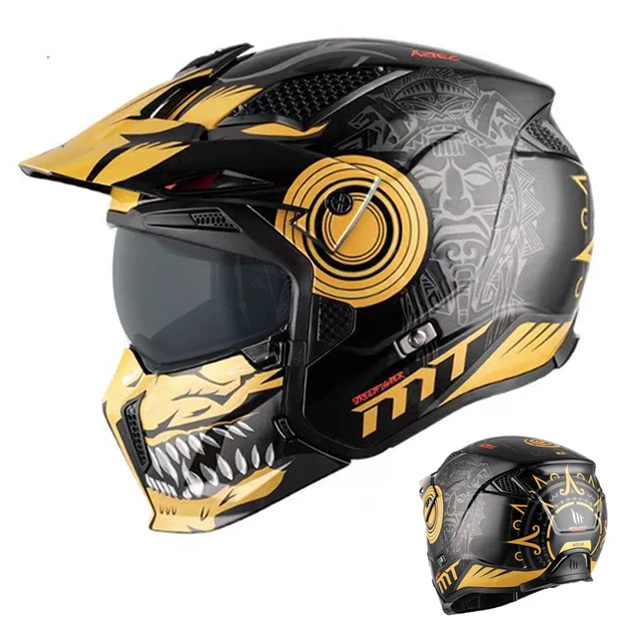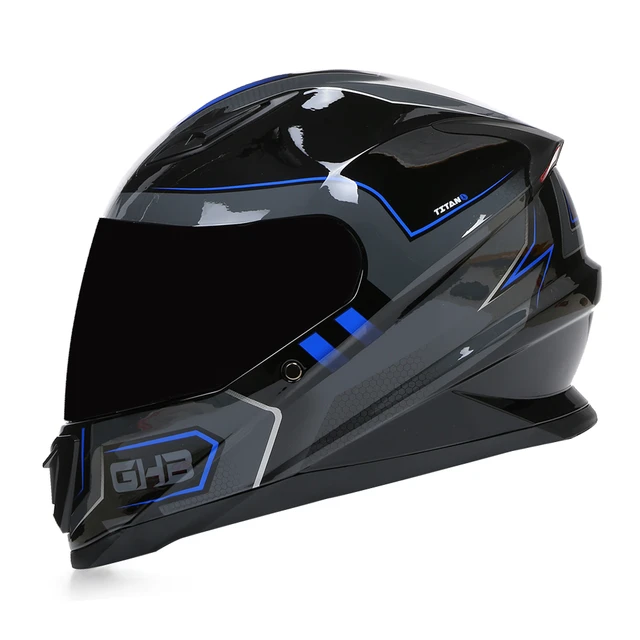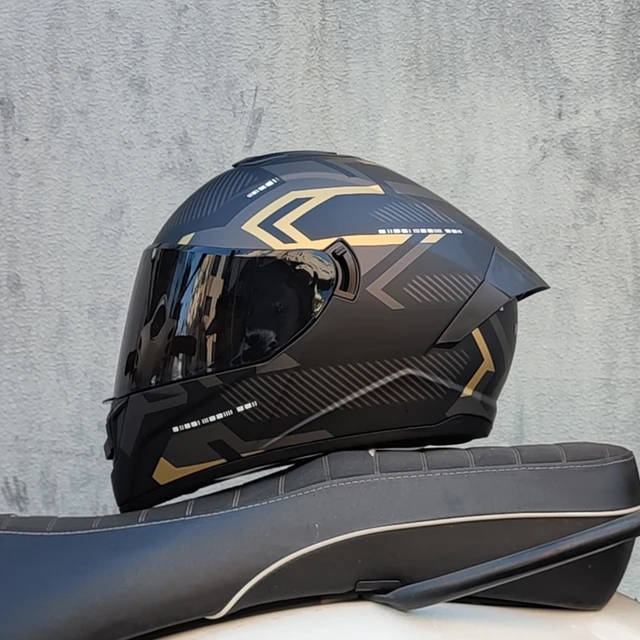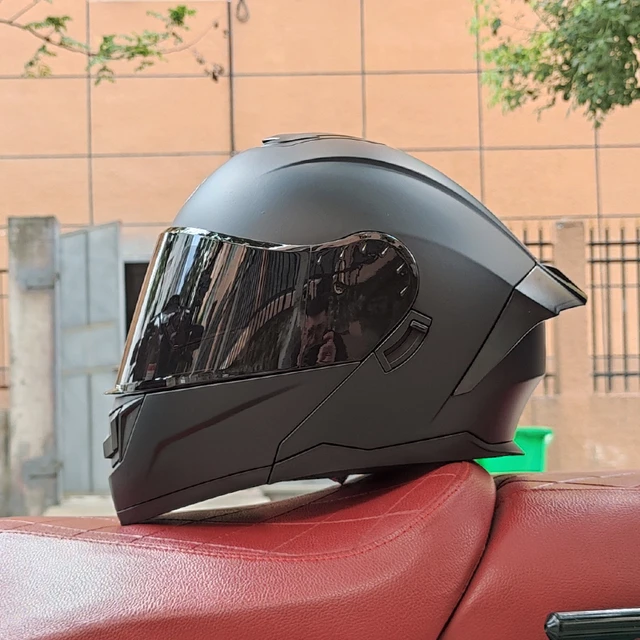Introduction:
Motorcycle helmets are a critical piece of safety equipment, protecting riders from head injuries in the event of an accident. However, they don’t last forever and must be replaced periodically to ensure optimal protection. This comprehensive guide explains how long motorcycle helmets are good for, factors affecting their lifespan, signs that indicate it’s time for a replacement, and best practices for maintaining your helmet’s condition.

How Long Are Motorcycle Helmets Good For:
What Factors Determine Their Lifespan?
Standard Lifespan:
How Long Do Manufacturers Recommend Using a Motorcycle Helmet?
Most helmet manufacturers and safety organizations recommend replacing a motorcycle helmet every five years. This guideline is based on average helmet usage, material degradation, and advancements in safety technology.
Manufacturer Recommendations:
Industry Standards:
Five-Year Rule: The industry standard, endorsed by organizations such as the Snell Memorial Foundation and helmet manufacturers like Shoei and Arai, suggests a five-year lifespan for helmets. This recommendation considers the natural wear and tear of materials, even with regular maintenance.
Material Degradation:
Aging Materials:
Natural Degradation: Helmet materials, including the outer shell, inner liner, and comfort padding, degrade over time due to exposure to UV rays, sweat, oils, and environmental factors. Even if the helmet appears to be in good condition, the structural integrity might be compromised after five years.

Advanced Technology:
Up-to-date Safety Features:
Technological Improvements: Newer helmets are often designed with improved materials and safety features. Replacing your helmet within the recommended timeframe ensures you benefit from the latest advancements in protection and comfort.
Factors Influencing Longevity:
What Elements Affect the Lifespan of a Motorcycle Helmet?
Several factors can influence how long a motorcycle helmet remains safe and effective. Understanding these elements can help you determine when it’s time to replace your helmet.
Frequency of Use:
Regular Wear and Tear:
Daily Riders: Riders who use their helmets daily or frequently may experience faster degradation due to constant wear and regular exposure to environmental factors. This can lead to a reduced effective lifespan.
Occasional Riders: Riders who use their helmets less frequently might find their helmets lasting closer to or beyond the five-year mark, provided the helmet is stored properly and shows no signs of significant wear.
Exposure to Elements:
Environmental Impact:
UV Radiation: Prolonged exposure to sunlight can degrade the outer shell and cause discoloration and weakening. UV radiation can also deteriorate the internal foam layer, compromising protection.
Extreme Temperatures: Extremely hot or cold temperatures can affect the materials used in helmet construction. Storing your helmet in a temperature-controlled environment can help mitigate these effects.
Impact Damage:
Accident Consequences:
Single Impact Rule: Helmets are designed to absorb the energy from a single impact. Even if there is no visible damage after an accident, the internal structure might be compromised. It’s best to replace a helmet after any significant impact to ensure continued protection.
Minor Drops: Repeated minor drops can also degrade the helmet’s protective capabilities. Inspect your helmet regularly for signs of damage following any impact, regardless of severity.

Care and Maintenance:
How Can Proper Care Extend the Life of Your Motorcycle Helmet?
Proper care and maintenance can help maximize the lifespan of your motorcycle helmet, ensuring it remains effective for as long as possible.
Regular Cleaning:
Maintaining Hygiene:
Exterior Cleaning: Clean the outer shell with mild soap and water using a soft cloth. Avoid harsh chemicals that can weaken the shell. Regular cleaning removes dirt, debris, and residues that can degrade materials.
Interior Cleaning: Wash the removable interior liners and padding according to the manufacturer’s instructions. Use mild detergents and allow the components to dry completely before reassembly. Regular cleaning prevents sweat and oils from breaking down the interior foam.
Proper Storage:
Caring for Longevity:
Controlled Environment: Store your helmet in a cool, dry place away from direct sunlight and extreme temperatures. Use a helmet bag or cover to protect it from dust and accidental damage.
Avoid Contaminants: Keep your helmet away from chemicals, fuels, and cleaning solvents. These substances can degrade the materials and reduce protective capabilities.
Inspecting for Damage:
Regular Check-ups:
Visual Inspection: Regularly inspect your helmet for any visible signs of damage, including cracks, dents, and abrasions on the outer shell. Check the visor for scratches or damage that could impair vision.
Internal Examination: Inspect the internal foam liner for signs of compression, cracks, or deterioration. Check the straps and fasteners for signs of wear and ensure they are functioning correctly.
Signs It’s Time to Replace Your Helmet:
What Are Indicators That a Helmet Needs Replacing?
Recognizing the signs that your helmet is no longer safe to use is crucial for ensuring your protection while riding.
Visible Wear and Damage:
Immediate Attention:
Surface Cracks: Cracks or deep scratches on the outer shell indicate compromised integrity. Even minor damage can affect the helmet’s ability to protect in a crash and should be addressed immediately.
Internal Foam Degradation: If the internal foam shows signs of wear, such as compressions or cracks, the helmet’s ability to absorb impacts is reduced, warranting replacement.

Comfort and Fit:
Ensuring Proper Fit:
Loose Fit: Over time, the helmet’s padding can compress and lose its shape, resulting in a looser fit. A helmet should fit snugly without causing discomfort. If it feels loose, it may not provide adequate protection.
Discomfort: Unusual discomfort or pressure points may indicate that the internal padding or foam has degraded and is no longer providing proper support.
Strap and Fastener Wear:
Secure Fastening:
Worn Straps: Check the chin strap and other fastenings for signs of wear or fraying. These components are critical for keeping the helmet in place during an impact. If they show significant wear, replacement is necessary.
Faulty Buckles: Ensure all buckles and fastening mechanisms are functioning correctly. Any failure in these components can render the helmet ineffective during a crash.
Understanding Helmet Certifications:
How Do Standards Affect Helmet Lifespan and Safety?
Helmet certifications indicate that a helmet meets specific safety standards, which can also provide insights into its expected lifespan and performance.
Common Certifications:
Recognizing Standards:
DOT and ECE: In the United States, helmets must comply with Department of Transportation (DOT) standards. In Europe, the Economic Commission for Europe (ECE) certification is common. Both standards ensure basic safety requirements are met.
Snell Certification: The Snell Memorial Foundation provides a voluntary certification that indicates higher safety standards. Helmets with Snell certification typically undergo more rigorous testing and may offer enhanced protection.
Replacing Based on Certification:
Guidelines for Safety:
Manufacturer Recommendations: Follow the replacement guidelines provided by the helmet manufacturer. These are often based on the certification standards and the specific materials used in the helmet’s construction.
Regular Updates: Stay informed about updates to safety standards and certification guidelines. Advances in safety technology may prompt earlier replacement to benefit from improved protection features.

Best Practices for Helmet Replacement:
How Can You Ensure You Always Have Optimal Protection?
Adopting best practices for helmet replacement guarantees that your head protection is always at its best, reducing the risk of injury in an accident.
Scheduled Replacement:
Regular Replacement Timeline:
Five-Year Rule: Plan to replace your helmet every five years, regardless of its apparent condition. Set a reminder or mark the purchase date to keep track of the timeline.
Post-Accident Replacement:
Replace After Impact:
Single Crash Rule: Replace your helmet after any significant impact, even if there’s no visible damage. Structural integrity can be compromised without obvious signs, diminishing protection.
Investment in Safety:
Value of Protection:
Prioritize Quality: Invest in a high-quality helmet from a reputable manufacturer. While cost might be a consideration, the safety and protection offered by a well-made helmet justify the investment.
Regular Evaluation:
Continual Assessment:
Ongoing Checks: Regularly assess the condition of your helmet, even if it hasn’t reached the five-year mark. Look for signs of wear, degradation, and damage. Early detection can prevent using compromised protection.
Conclusion
Understanding how long motorcycle helmets are good for, and recognizing the factors that affect their lifespan, is crucial for rider safety. By following manufacturer recommendations, regularly inspecting your helmet for signs of wear and damage, and practicing proper care and maintenance, you can ensure your helmet provides optimal protection. Whether you are a daily rider or an occasional user, adhering to these guidelines will help you know when it’s time to replace your helmet, ensuring you always ride with the best protection available. Prioritizing the integrity and functionality of your helmet is an investment in your safety on the road.

